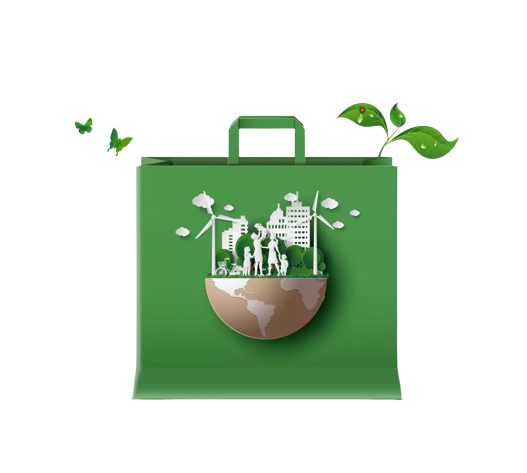Introduction
As the environmental sustainability issue increases, more individuals are looking back on their dependency on conventional plastic bags. Biodegradable bags have been introduced as an environmentally friendly alternative, but are they really that different? This manual investigates the main differences between biodegradable plastic bags and standard plastic bags to assist buyers in making a well-informed decision.
Understanding Plastic Bags
Conventional plastic bags are manufactured from petroleum products, including polyethylene (PE) and polypropylene (PP).** These are extremely resistant but not biodegradable, resulting in high plastic waste in landfills, oceans, and the natural environment. It takes hundreds of years for plastic bags to degrade, and while doing so, they release toxic microplastics into the ecosystem.
What Sets Biodegradable Bags Apart
Biodegradable plastic bags are formulated to break down with the assistance of microorganisms, heat, and water over a period of time. In contrast to traditional plastic bags that remain in the environment forever, biodegradable bags consist of plant, vegetable, or organic products like cornstarch, PLA (polylactic acid), and PBAT (polybutyrate adipate terephthalate). They are, therefore, a much more eco-friendly choice.
Breakdown Process: How Each Type Decomposes
Plastic Bags: Take hundreds of years to decompose and release toxic microplastics.
Biodegradable Bags: Break down within months or a few years, depending on oxygen exposure, heat, and bacteria.
Compostable Bags: A type of biodegradable bag, compostable bags fully disintegrate into organic material with no toxic residual waste.
Environmental Impact Comparison
Plastic Bags: Biggest causes of ocean pollution, killing marine life and disrupting ecosystems.
Biodegradable Bags: Assist in reducing plastic waste and pollution.
Compostable Bags: Provide the greatest environmental advantage when put through industrial composting.
Cost and Affordability of Biodegradable Bags
Biodegradable plastic bags are more expensive than normal plastic bags, but their long-term advantages take precedence over cost. Due to increased demand, more businesses are providing affordable green bag alternatives, and they are now affordable for customers globally.
Which One Should You Pick?
If decreasing your environmental impact is important to you, then biodegradable bags and compostable bags are the way to go. Though they might cost more initially, they help make the world a cleaner, healthier place and fit into global efforts at sustainability.
Conclusion
Moving from plastic bags to biodegradable plastic bags is one of the ways to cut back on waste while conserving the environment. Moving towards sustainable means by consumers results in a positive long-term influence and fosters a cleaner environment. For storage, shopping, or waste handling, going over to biodegradable and compostable bags is a step towards responsibility.


